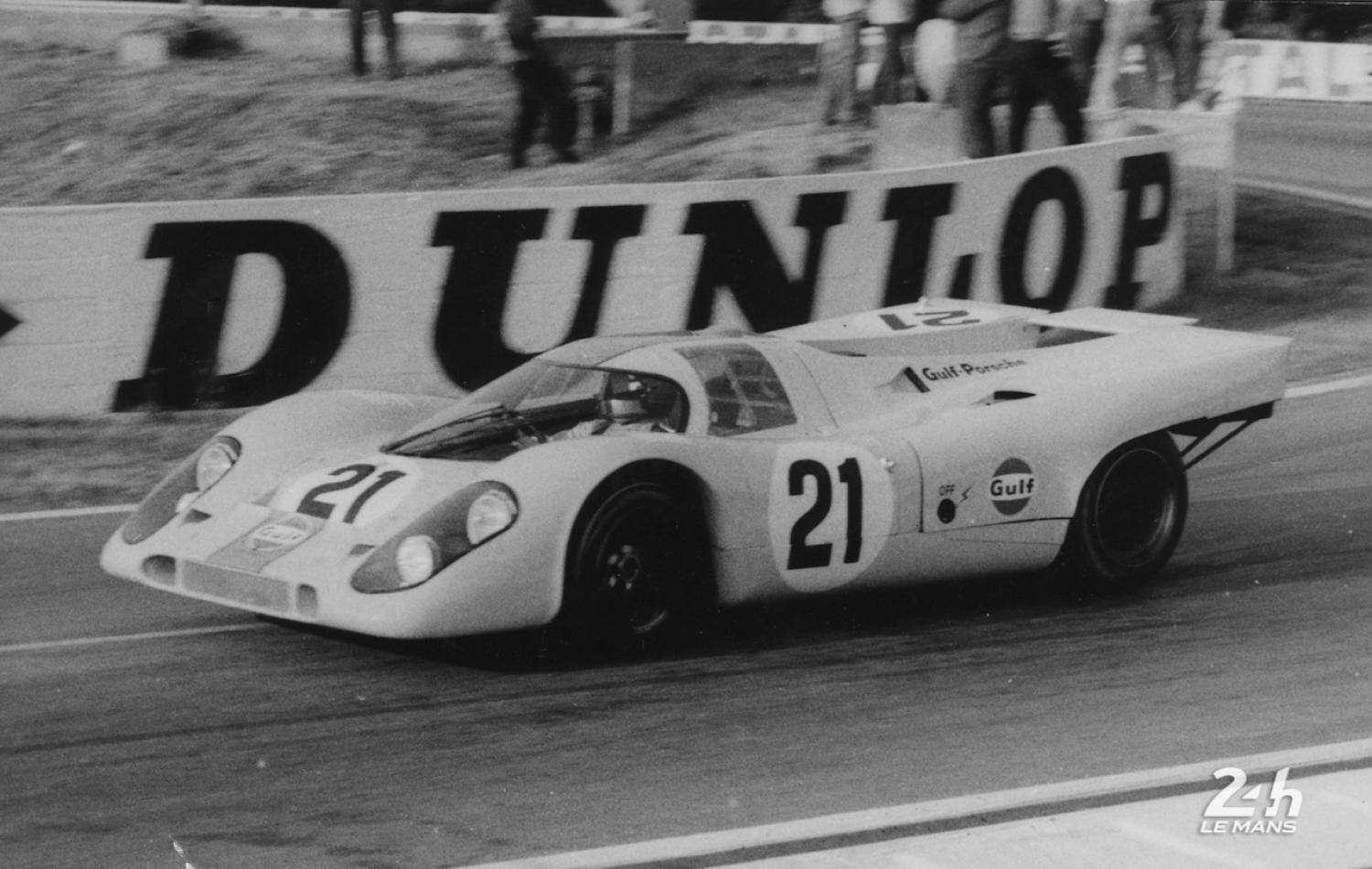Fifty years ago, Porsche clinched its very first win at the 24 Hours of Le Mans, entering the 917 in the motorsport hall of fame. For the 38th running of the race, the car would know remarkable variations, both through its lines and its liveries, searing it all the more in the world's collective memory.
Each of the seven 917s at the start of the 1970 24 Hours had its own visual signature, further confirming the outstanding nature of a car with a very special place in the history of Porsche at Le Mans. Three teams with six 917s were factory while the seventh car was a private entry.
Winner at the 1968 and 1969 runnings of the race with the Ford GT40, John Wyer gave his 917s three different versions of Gulf Oil's famous livery: sky blue with an orange stripe that ran on the front and underbody for Jo Siffert-Brian Redman (#20), sky blue with an orange stripe for Pedro Rodríguez-Leo Kinnunen (#21) and sky blue body and orange roof for David Hobbs-Mike Hailwood (#22). Considered some of the favourites, they qualified third (#20), fifth (#21) and 10th (#22), but were forced to retire before mid-race, with engine troubles for Rodríguez and Siffert, and an incident for Hailwood.
Porsche's first win after two decades participating in the 24 Hours was secured by Porsche Konstruktionen Salzbourg. Financed by Louise Piëch and managed by her son Ferdinand, sister and nephew of Ferry Porsche, the team also had its own noteworthy style: stylized flames on the headlights. It fielded two different configurations of the 917: a white long body (called LH) with red flames for Vic Elford-Kurt Ahrens (#25) and a red short body (called K) with white flames for Richard Attwood-Hans Herrmann (#23). The success of the 917 made Ferdinand Piëch the big winner of the 1970 race. Fifteenth on the starting grid and last of the seven 917s after qualifying, Attwood-Herrmann's car took the lead in the 11th hour and never gave it up. Though the #25 was forced to retire in the 18th hour, Elford had already established new pole position and in-race lap records. The winning 917 sported the same racing and chassis number: the 23.
A second long body 917 took the start in the 38th 24 Hours, quickly becoming the darling of photographers: it boasted a mauve livery during qualifying and was enhanced with green the day before the race. This "psychedelic" 917 captured the culture of the time and required more than a 1,000 spray cans to complete. Fielded by Martini Racing, the car was shared by Gérard Larrousse and Willi Kauhsen. After qualifying in 12th position, it broke the top 3 in the seventh hour and finished in second place.
Painted in yellow (body) and red (underbody and nose), the seventh 917 was fielded jointly by AAW Racing owned by Finnish businessman Antti Aarnio-Wihuri and British driver David Piper. The latter shared the wheel with Dutch driver and rookie Gijs van Lennep. After qualifying in eighth position, the duo entered the top 3 early in the race, but was eventually delayed by an incident for Piper then a tyre blowout for Lennep that forced the car to retire. This 917 was unique for its rearview mirror mounted in the middle of the roof, allowing the driver to look through it via an opening between the two doors.
PHOTOS (Copyright - ACO/ARCHIVES): LE MANS (SARTHE, FRANCE), CIRCUIT DES 24 HEURES, 24 HOURS OF LE MANS, 13-14 JUNE 1970. (From top to bottom) After winning in 1968 and 1969 with the Ford GT40, Gulf Oil's colours figured on three Porsche 917s, including that of Pedro Rodríguez-Leo Kinnunen (#21). The #25 917 LH pole-sitter was later lent to the film Le Mans by the German marque. The #3 Porsche 917 LH had its final livery change the day before the race when green paint was added to its white portions. Its central periscope-style mirror was the distinctive trait of the private #18 Porsche 917 K.





